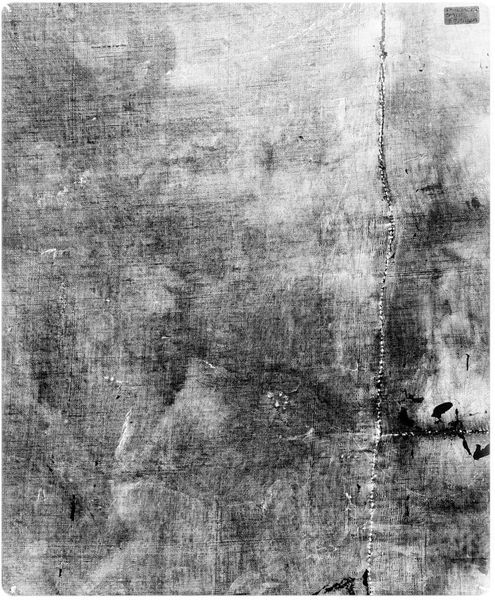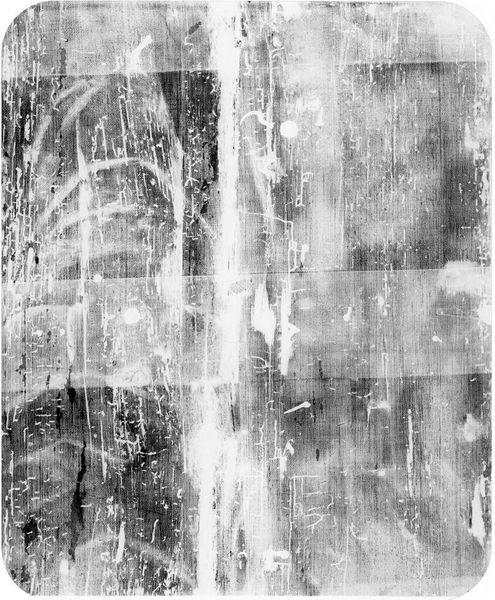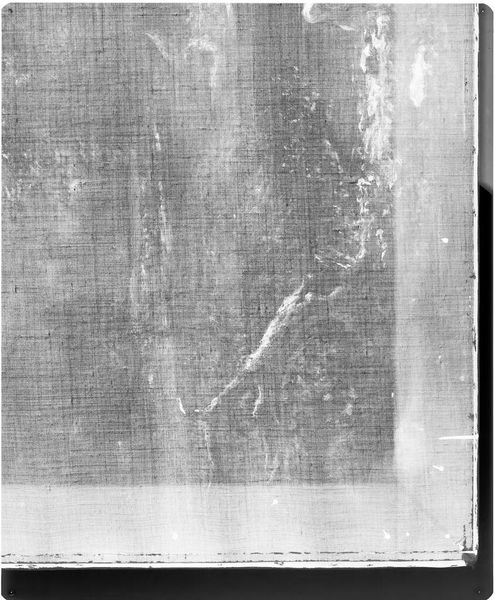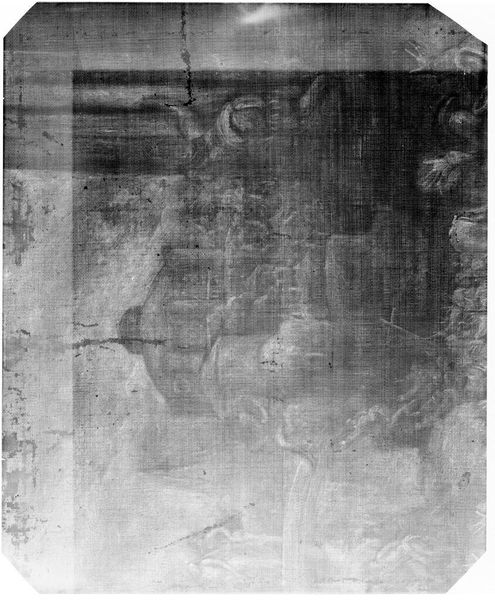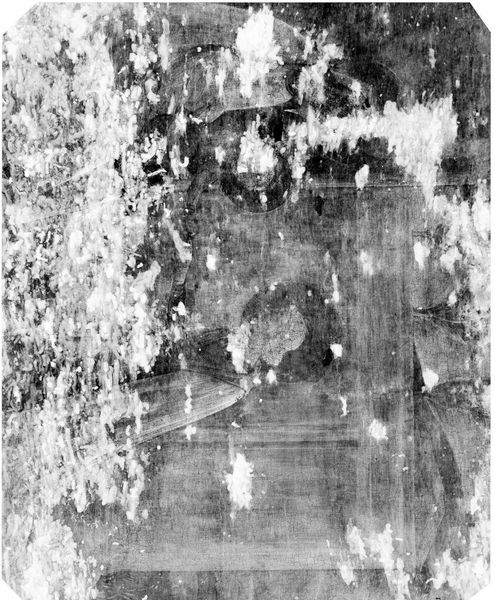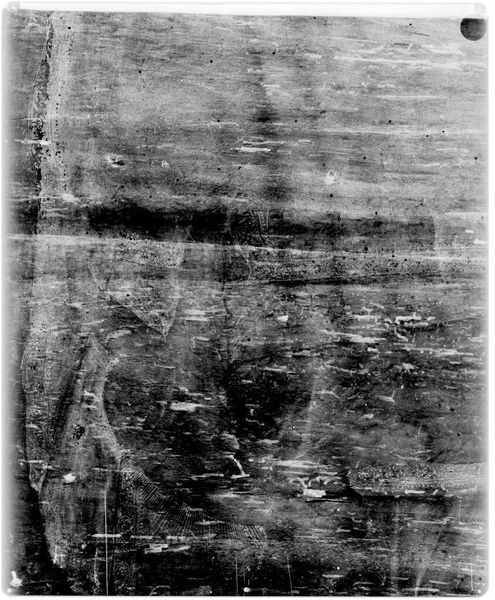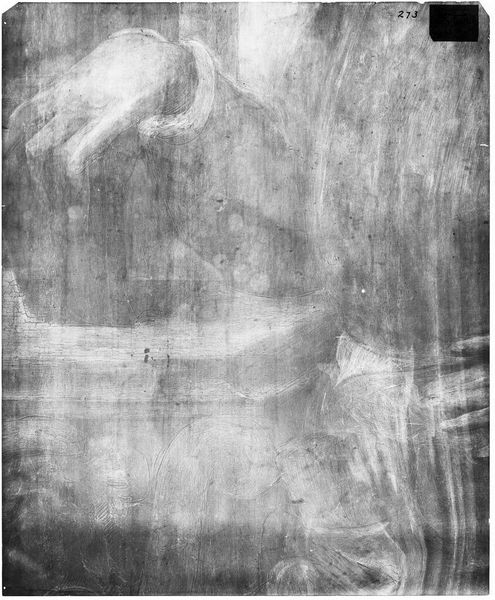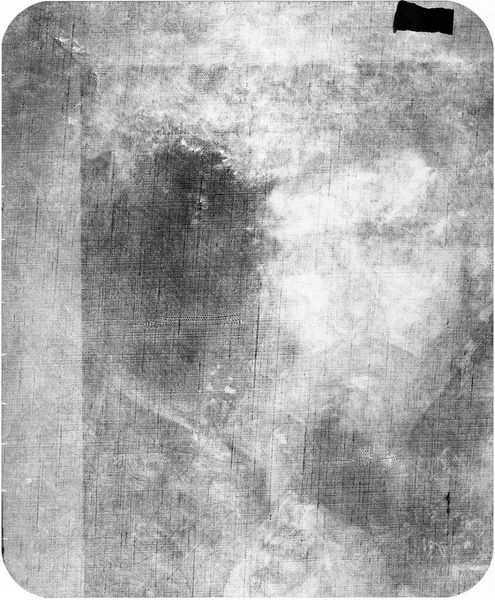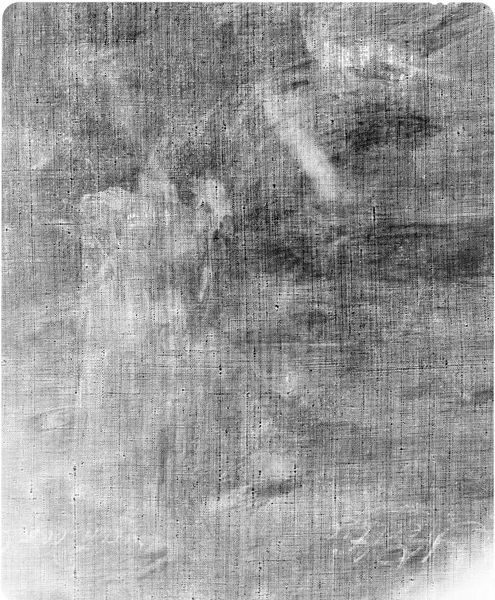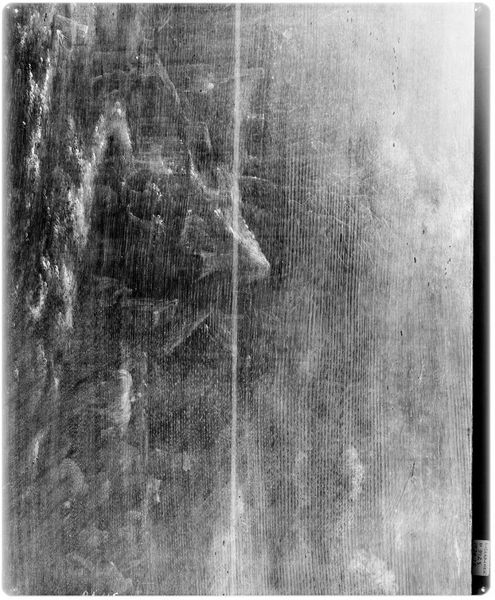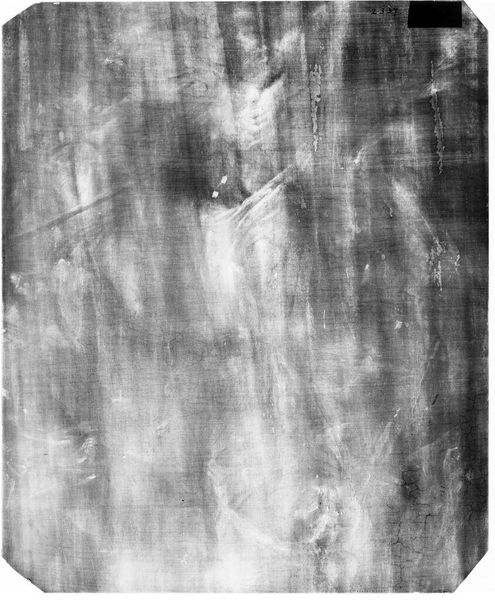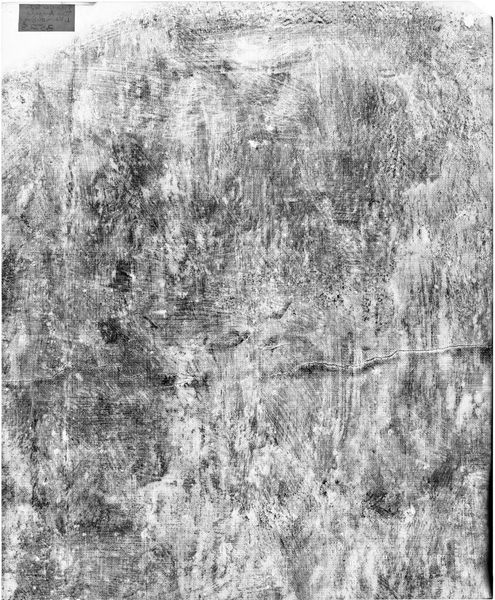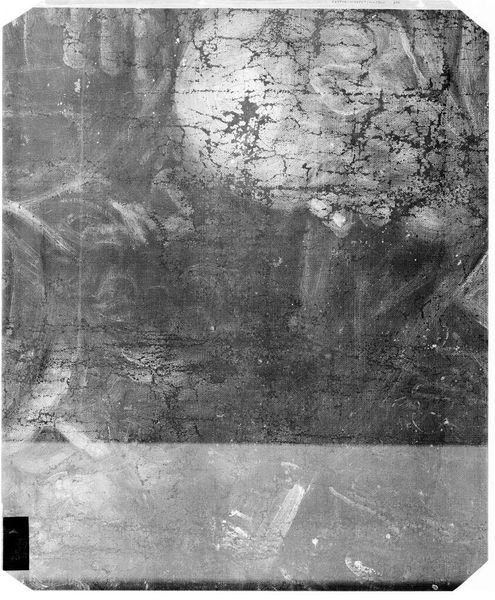
X-radiograph(s) of "Madonna and Child and Saints"
0:00
0:00
Copyright: CC0 1.0
Curator: Well, this is unexpected. The Harvard Art Museums hold this X-radiograph of "Madonna and Child and Saints," after Bernardino Luini. What do you make of this ghostly image? Editor: It's eerie, almost unsettling. The fragmented composition, the skeletal outlines…it evokes a sense of loss, as if we're seeing the artwork's afterlife. Curator: Indeed. X-radiography allows us to peer beneath the surface, revealing the artist's process and the hidden history of the painting. It exposes the underlying structure and any alterations made over time. It's a kind of reverse archaeology. Editor: I see the layers as echoes of cultural and artistic dialogues. The original painting depicted idealized forms within a religious context. But this exposes the vulnerabilities of representation and the material reality underpinning faith and identity. Curator: A powerful observation. Perhaps this image encourages us to confront the artifice inherent in representation itself. Editor: Precisely. It prompts a critical re-evaluation of beauty, belief, and the very act of looking. Curator: I agree. It certainly gives one pause to consider the lifespan of an artwork and the many unseen hands that have shaped its existence. Editor: It's a stark reminder that even the most revered images are ultimately transient.
Comments
No comments
Be the first to comment and join the conversation on the ultimate creative platform.
